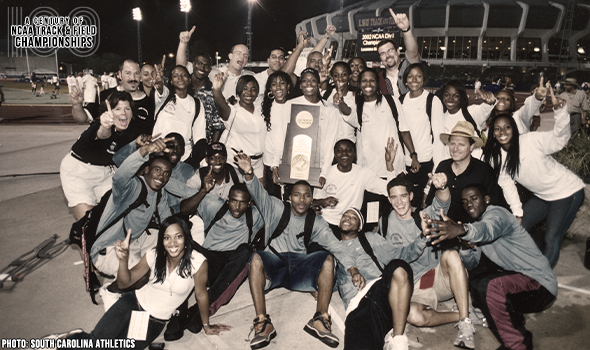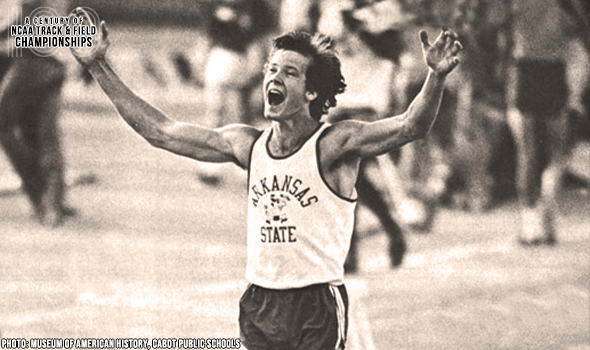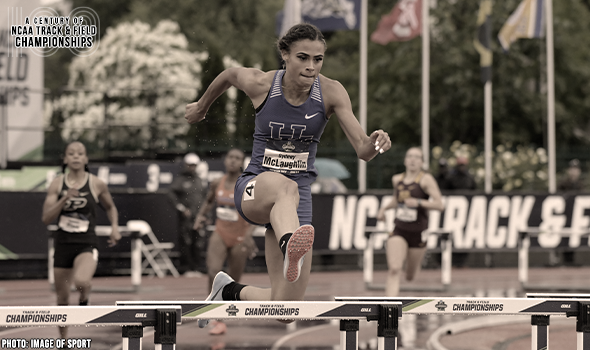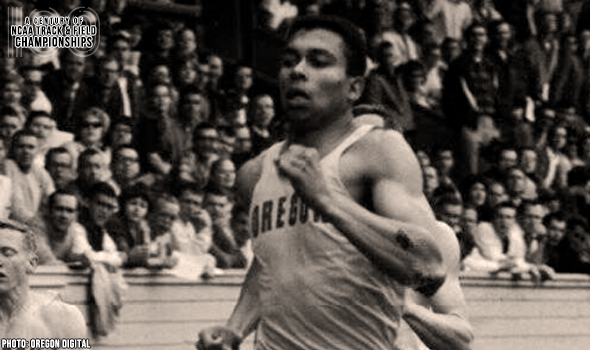
Stanford Romped To National Title in 1928
How good was Stanford’s 1928 NCAA championship team?
The Cardinal’s 72 points more than doubled the total of its closest challenger.
Stanford also had five different athletes win individual titles: That’s a combination no other program has yet matched in the same meet.
Adding to the impressiveness, all five of the Cardinal’s individual champions that year were (or would become) world record setters and/or Olympic medalists, and no points were scored by a sixth athlete with that same illustrious distinction.
Bud Spencer was captain of the squad and scored Stanford’s only points on the track, winning the 440 yards in a meet record 47.7. Spencer, who had broken the 400-meter world record at 47.0 a month earlier, had the fastest split on the U.S. 4×400 quartet that won gold with a world record in the 1928 Olympics later that summer.
Also setting a meet record – two, in fact – was pole vaulter Ward Edmonds with a final height of 13-6½ (4.13m). Earlier in the year, Edmonds had equaled the world record and became history’s third-ever 14-footer. Edmonds, who in 1929 became the first repeat NCAA vault champion with a co-title (and another MR at 13-8¾ or 4.18m), died suddenly in 1930 from polio at age 22.
Robert King won the high jump at 6-4½ (1.94m) and afterward was allowed to continue jumping, scaling a PR 6-6½ (1.99m). A month later, King would only need just 6-4¼ to earn the gold medal at the Olympics in Amsterdam.
Stanford could have won the meet just in the throwing events, where they earned 34 points (team runner-up Ohio State had 31), led by sophomore Eric Krenz with 18.
It was Krenz who actually got Stanford’s celebration started early, setting a meet record in the discus qualifying on the first day. His MR 149-2 (45.48m) carried over the next day to win the final and he added a runner-up effort in the shot put, losing to teammate Harlow Rothert.
For Rothert, another sophomore, it was the first of three-straight shot put titles to become the meet’s first three-time champion in a field event (Krenz was second each time). Both throwers were Olympians, though only Rothert would earn a medal – silver in the shot put in 1932, by which time teammate Krenz – a three-time world record setter in the discus – had died in a boating accident at age 25.
Not even scoring for Stanford was Ross Nichols, who finished sixth in the 120-yard hurdles but was disqualified for knocking over a hurdle. A month later, Nichols earned a similar DQ in the Olympic Trials 110-meter hurdles, in which he equaled the world record of 14.8 in the semifinals without knocking over any barriers.
The NCAA and collegiate track & field will mark a momentous milestone in the spring of 2021 -- the 100th anniversary of the NCAA Championships and with that, the NCAA Track & Field Championships. In June 1921, the University of Chicago hosted the first track & field championships in NCAA history.
This point can’t be emphasized enough: Not only was the event the first for NCAA track & field, but the first championships for any sport under the sponsorship of the NCAA.
To celebrate, over each of the next 365 days, the U.S. Track & Field and Cross Country Coaches Association (USTFCCCA) will celebrate moments, student-athletes, and coaches that have made a century’s worth of championships special. From humble beginnings to important historical milestones to the modern-day, collegiate track & field has evolved with the American society.
The 2021 edition of the NCAA Division I Outdoor Track & Field Championships begin with preliminary round action on May 27-29 in Jacksonville, Fla., and College Station, Texas. The championships final site and culmination of the celebration is slated for June 9-12, 2021 at the newly rebuilt Hayward Field in Eugene, Ore.

Event Dominance Propelled South Carolina’s Run
South Carolina rose to prominence in the late 1990s to early 2000s thanks to a trio of extremely talented sprinters.

Calhoun High Hurdled Into The Record Book
Lee Calhoun of North Carolina Central set meet records in back-to-back years at the NCAA Outdoor Track & Field Championships!

Howl Yes! Bell Vaulted To Greatness
Earl Bell won three consecutive pole vault titles at the NCAA Division I Outdoor Track & Field Championships between 1975 and 1977,

McLaughlin Had No Hurdling Competition
In 2018, Sydney McLaughlin set a 400H collegiate record in May and then posted the largest margin of victory in NCAA DI meet history one month later.

Oregon’s Jerome Sprinted To NCAA Glory
Harry Jerome won two national titles at the NCAA Division I Outdoor Track & Field Championships, highlighted by a meet record in the 100 meters in 1964.

Levins Kicked Past Competition In 5K/10K
Cam Levins swept the 5K & 10K at the 2012 NCAA Division I Outdoor Track & Field Championships and won The Bowerman that same year.

Russell Dominated The 100H At NCAAs
Gillian Russell won three career 100H titles at the NCAA Division I Outdoor Track & Field Championships, doing so between 1993 and 1995.

Fosbury Flopped To High Jump Glory
Dick Fosbury, creator of the “Fosbury Flop,” won back-to-back high jump titles at the NCAA Outdoor Championships in 1968 and 1969 with meet records in both years.

Fleshman Starred In The 5000 Meters
Lauren Fleshman posted three victories in the 5000 meters at the NCAA Division I Outdoor Track & Field Championships in her career.

X-Man Reigned At 2006 NCAA Meet
Xavier Carter won four national titles at the 2006 NCAA Division I Outdoor Track & Field Championships, completing the only 100-400 sweep and helping the title-winning 4×100 and 4×400 relay teams.

